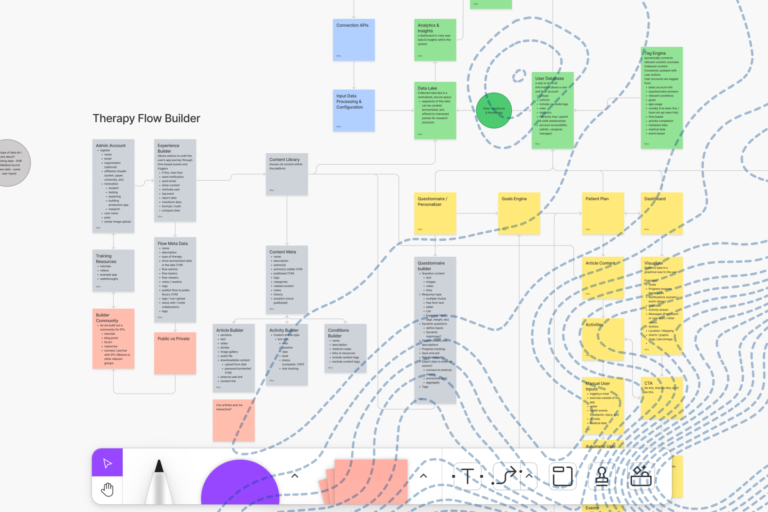Last month, a few members from the Arcweb Technologies team participated in the Spark CX (short for Customer eXperience) hackathon hosted by French gas giant Air Liquide. Managed by BeMyApp, a developer-oriented events organization, the two-day hackathon took place at Philadelphia’s Chemical Heritage Foundation, right around the corner from Arcweb HQ.
(Side note: You probably don’t know what Air Liquide is or exactly what they do, but chances are it has touched your life in some way. The multinational corporation stretches across 80 countries, has 75,000-plus employees, 3 million customers, and makes over $20 billion (yep, that’s a B!) in annual revenue. Air Liquide provides fuel for hydrogen cars, oxygen and nitrogen for hospitals, and components that help create nearly every piece of tech in your life from monitors and TV screens to the the RAM in your computer.)
At a high level, Air Liquide’s hackathon challenged participants to create revolutionary application prototypes across industries. Specifically, there were two challenges:
As you can see, each challenge featured a $2,000 prize. Before we go any further, I want to quickly point out that our team was a winner! OK. Now that that’s out of the way, let’s talk more about hackathons…
In the developer community, hackathons have been around for a while. They used to be all about writing code quickly, but the term has been co-opted for a much broader range of challenges, competitions and meetups. As a result (and as a result of technology’s persistent push into every industry and every human life) companies like Air Liquide, Bank of America and many other household brand names have started to host hackathons. And that made us think: what makes a good hackathon? What do companies that are thinking about hosting hackathons need to get right? We’ve put together a quick guide that large organizations can use to put on hackathons that are both successful and—perhaps more importantly—useful.
Have a Clear Objective
Hosting a hackathon for the sake of hosting a hackathon is like wanting to build a mobile app for the sake of wanting to build a mobile app. It doesn’t make sense. The results will underwhelm and your higher-ups will wonder why they even OK’d this in the first place. Air Liquide had a clearly stated purpose for its hackathon: “A 48-hour challenge to create revolutionary application prototypes across industries.” But beyond that the business purpose of their hackathon was to essentially crowdsource innovative ideas that either improved the experience for hydrogen fuel car drivers or disrupted how their B2B sales teams cross-sell and upsell. And this brings us to our next point…
Be Transparent
Air Liquide’s proposition to hackathon participants was simple: we give you a bunch of great development resources and a shot at some cash, you dream up innovative ideas for us. Of course there are less tangible participant benefits too: networking, perhaps future business relationships with the host, a new product idea, etc. The last point I’ll make about transparency is that hackathon-hosting organizations must be up front about output ownership. Do the participants retain ownership to what they create? Does the organization retain exclusive rights?
Have a Schedule
Some hackathons can actually begin before your hands touch your keyboard. Spark CX had an ideation night a few days before the hackathon that gave us a huge look into the gas industry and the problems Air Liquide needed help solving. This really helped us set the groundwork for our ideas. Knowledge is power and the more knowledge your participants have, the better prepared they’ll be. Other hackathon scheduling tips include:
*Be clear about arrival and break times. Everyone should have the same amount of time to answer the challenge(s).
*Communicate clearly about overnight policies. Will the venue stay open ‘round the clock? What does that mean for security and access?
*Inform participants of deadlines, pitch sessions, etc.
*Make sure the order of events is clear. The basic formula is to arm teams with resources (see below), let them hack away, develop their pitch and, ultimately present, usually to a panel of judges.
Have Resources
The best hackathons have two types of resources: technical and personal. What data sets do you have to offer participants? APIs? SDKs? Customer data? Sales data? “We’ve got all this stuff, see what you can do with it!” is a lot better than “Build us something from scratch.”
Similarly, have expert mentors on site. Most hackathons will have participants attempting to solve problems in industry segments of which they have little to no prior knowledge. Sure, Google is a great resource, but nothing beats talking to someone who lives in the industry, suffers through the pain points or has to deal with the customers that do. At the Air Liquide hackathon our team probably spent 2-3 hours speaking with a variety of mentors on Day 1. That was time NOT designing, writing code, or working on the pitch. It was time spent understanding the problems that the customer cared about. This helped us make our pitch more convincing. It paid off in spades.
You’ll also want to have a hackathon leader or emcee that runs the show, provides schedule updates, and can answer general questions. Depending on the size of your hackathon, you might want to allocate a group of folks to this role.
State the Deliverables
Remember, this is a hackathon. Do not expect polished results. Teams will (should) focus on getting core concepts done and then refining them rather than trying to perfect each piece. That said, the best hackathons have a clear list of deliverables each team needs to make good on. For the Air Liquide hackathon, we had to have a Keynote deck, a Pitch, Code, and a Prototype.
Provide the Fuel
Coffee. Fluids. Pizza. Snacks. Fruit. Energy bars. Brain food. More coffee. Not only will these items power great ideas, they’ll also build good will. Imagine arriving at a hackathon and realizing that you also have to take care of ordering food, running out to get coffee, etc.
And don’t forget the most important fuel: strong wifi!
Strive for Diversity
The more skills and perspectives you can attract to your hackathon, the better. Remember, hackathons aren’t just for coders anymore! At the Air Liquide hackathon, our team was composed of two developers, one designer, and one unicorn who was part sales/marketing, part UX practitioner, part PM. This helped us figure out our team’s strengths and play to them.
Building a digital product?
Have questions about hosting a hackathon? Give us a shout and we’ll brainstorm with you. And be sure to keep an eye out for our next hackathon-related post that will explore how you can survive your first, as a participant.




